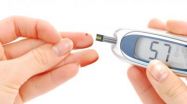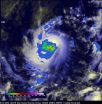(Press-News.org) (PHILADELPHIA) - A Penn Medicine team has found that targeted automated alerts in electronic health records significantly reduce urinary tract infections in hospital patients with urinary catheters. In addition, when the design of the alert was simplified, the rate of improvement dramatically increased.
The alerts help physicians decide whether their patients need urinary catheters in the first place and then alert them to reassess the need for catheters that have not been removed within a recommended time period. The electronic alert, developed by medical researchers and technology experts at the Perelman School of Medicine at the University of Pennsylvania, is the subject of a study published in the September issue of Infection Control and Hospital Epidemiology.
Approximately 75 percent of urinary tract infections acquired in the hospital are associated with a urinary catheter, which is a tube inserted into the bladder through the urethra to drain urine. According to the Centers for Disease Control and Prevention, 15 to 25 percent of hospitalized patients receive urinary catheters during their hospital stay. As many as 70 percent of urinary tract infections in these patients may be preventable using infection control measures such as removing no longer needed catheters resulting in up to 380,000 fewer infections and 9,000 fewer deaths each year.
"Our study has two crucial, applicable findings," said the Penn study's lead author Charles A. Baillie, MD, an internal medicine specialist and fellow in the Center for Clinical Epidemiology and Biostatistics at Penn Medicine. "First, electronic alerts do result in fewer catheter-associated urinary tract infections. Second, the design of the alerts is very important. By making the alert quicker and easier to use, we saw a dramatic increase in the number of catheters removed in patients who no longer needed them. Fewer catheters means fewer infections, fewer days in the hospital, and even, fewer deaths. Not to mention the dollars saved by the health system in general."
In the first phase of the study, two percent of urinary catheters were removed after an initial "off-the-shelf" electronic alert was triggered (the stock alert was part of the standard software package for the electronic health record). Hoping to improve on this result in a second phase of the study, Penn experts developed and used a simplified alert based on national guidelines for removing urinary catheters they had previously published with the CDC. Following introduction of the simplified alert, the proportion of catheter removals increased more than seven-fold to 15 percent.
The study also found that catheter associated urinary tract infections decreased from an initial rate of .84 per 1,000 patient days to .70 per 1,000 patient-days following implementation of the first alert and .50 per 1,000 patient days following implementation of the simplified alert. Among other improvements, the simplified alert required two mouse clicks to submit a remove-urinary-catheter order compared to seven mouse clicks required by the original alert.
The study was conducted among 222,475 inpatient admissions in the three hospitals of the University of Pennsylvania Health System between March 2009 and May 2012. In patients' electronic health records, physicians were prompted to specify the reason (among ten options) for inserting a urinary catheter. On the basis of the reason selected, they were subsequently alerted to reassess the need for the catheter if it had not been removed within the recommended time period based on the reason chosen.
Women's health units had the highest proportion of alerts that led to a remove-urinary-catheter order and critical care units saw the lowest proportion of alerts leading to a remove order.
"As more hospitals adopt electronic health records, studies such as ours can help point the way toward improved patient care," said senior author Craig Umscheid, MD, MSCE, assistant professor of Medicine and Epidemiology and director of Penn's Center for Evidence-based Practice. "Thoughtful development and deployment of technology solutions really can make a difference. In this study, we learned that no two alerts are alike, and that changes to an alert's usability can dramatically increase its impact."
Several studies have already shown that reminder systems to limit the use and duration of urinary catheters can lower catheter infection rates. However, the majority of these have used non-computerized reminders, such as written reminders or stickers. The current Penn study is one of the largest to examine the impact of electronically generated alerts. In addition to the size of the study, a second strength is its multi-year duration. Most prior studies relied on a brief study period, and several studies observed an increase in catheter use when the relatively brief intervention had ended.
INFORMATION:
In addition to Baillie and Umscheid, other Penn Medicine co-authors are Mika Epps, MSN, RN; Asaf Hanish, MPH; Neil O. Fishman, MD; and Benjamin French, PhD.
Penn Medicine is one of the world's leading academic medical centers, dedicated to the related missions of medical education, biomedical research, and excellence in patient care. Penn Medicine consists of the Raymond and Ruth Perelman School of Medicine at the University of Pennsylvania (founded in 1765 as the nation's first medical school) and the University of Pennsylvania Health System, which together form a $4.3 billion enterprise.
The Perelman School of Medicine has been ranked among the top five medical schools in the United States for the past 17 years, according to U.S. News & World Report's survey of research-oriented medical schools. The School is consistently among the nation's top recipients of funding from the National Institutes of Health, with $392 million awarded in the 2013 fiscal year.
The University of Pennsylvania Health System's patient care facilities include: The Hospital of the University of Pennsylvania -- recognized as one of the nation's top "Honor Roll" hospitals by U.S. News & World Report; Penn Presbyterian Medical Center; Chester County Hospital; Penn Wissahickon Hospice; and Pennsylvania Hospital -- the nation's first hospital, founded in 1751. Additional affiliated inpatient care facilities and services throughout the Philadelphia region include Chestnut Hill Hospital and Good Shepherd Penn Partners, a partnership between Good Shepherd Rehabilitation Network and Penn Medicine.
Penn Medicine is committed to improving lives and health through a variety of community-based programs and activities. In fiscal year 2013, Penn Medicine provided $814 million to benefit our community.
Penn study: Electronic alerts significantly reduce catheter-associated urinary tract infections
Design of alerts crucial in achieving benefits for patients
2014-08-22
ELSE PRESS RELEASES FROM THIS DATE:
From happiness to pain: Understanding serotonin's function
2014-08-22
In a study published today (August 22nd), in the scientific journal PLoS One, researchers at the Champalimaud Neuroscience Programme establish the effect of serotonin on sensitivity to pain using a combination of advanced genetic and optical techniques.
"Serotonin is a small molecule known to be implicated in a wide range of brain functions, from the control of sleep and appetite, to the regulation of complex emotional behaviours, This neurotransmitter is also popularly thought to contribute to feelings of well being and happiness, as some anti-depression medications work ...
Kessler Foundation study of self-awareness in MS has implications for rehabilitation
2014-08-22
West Orange, NJ. August 22, 2014. A new study of self-awareness by Kessler Foundation researchers shows that persons with multiple sclerosis (MS) may be able to improve their self-awareness through task-oriented cognitive rehabilitation. The study was epublished ahead of print on July 2 in NeuroRehabilitation. (Yael Goverover, Helen Genova, Hali Griswold, Nancy D. Chiaravalloti & John DeLuca: Metacognitive knowledge and online awareness in persons with multiple sclerosis doi: 10.3233/NRE-141113). Self-awareness is one's ability to recognize cognitive problems caused by ...
Good news for diabetics who are sick of the finger prick
2014-08-22
WASHINGTON, August 21, 2014 — Diabetes affects nearly 10 percent of the U.S. population. Among the biggest complaints of diabetics: constant finger pricking to test blood glucose levels. Fortunately, research published in ACS Chemical Biology reports the development of a protein that could lead to less pain and more accurate results for diabetes patients. In the American Chemical Society's (ACS') newest Breakthrough Science video, Sylvia Daunert, Ph.D., shows off her "designer protein" that could eventually allow diabetics to check their blood sugar from their iPhones. ...
Tissue regeneration using anti-inflammatory nanomolecules
2014-08-22
Anyone who has suffered an injury can probably remember the after-effects, including pain, swelling or redness. These are signs that the body is fighting back against the injury. When tissue in the body is damaged, biological programs are activated to aid in tissue regeneration. An inflammatory response acts as a protective mechanism to enable repair and regeneration, helping the body to heal after injuries such as wounds and burns. However, the same mechanism may interfere with healing in situations in which foreign material is introduced, for example when synthetics are ...
NASA sees Tropical Storm Karina get a boost
2014-08-22
NASA's TRMM satellite saw Tropical Storm Karina get a boost on August 22 in the form of some moderate rainfall and towering thunderstorms in the center of the storm.
The Tropical Rainfall Measuring Mission or TRMM satellite passed directly above the center of Tropical Storm Karina on August 22, 2014 at 0151 UTC (Aug. 21 at 9:51 p.m. EDT). A rainfall analysis that used data from TRMM's Microwave Imager (TMI) showed that storms near Karina's center were dropping rain at a rate near 25 mm/1 inch per hour. Where the heaviest rainfall was occurring, TRMM spotted a couple ...
New enzyme targets for selective cancer therapies
2014-08-22
(Edmonton) Thanks to important discoveries in basic and clinical research and technological advances, the fight against cancer has mobilized into a complex offensive spanning multiple fronts.
Work happening in a University of Alberta chemistry lab could help find new and more selective therapies for cancer. Researchers have developed a compound that targets a specific enzyme overexpressed in certain cancers—and they have tested its activity in cells from brain tumours.
Chemistry professor Christopher Cairo and his team synthesized a first-of-its-kind inhibitor that ...
Women's health and 'Fifty Shades:' Increased risks for young adult readers?
2014-08-22
New Rochelle, NY, August 21, 2014—Popular fiction that normalizes and glamorizes violence against women, such as the blockbuster Fifty Shades series, may be associated with a greater risk of potentially harmful health behaviors and risks. The results of a provocative new study are presented in the article "Fiction or Not? Fifty Shades Is Associated with Health Risks in Adolescent and Young Adult Females," published in Journal of Women's Health, a peer-reviewed publication from Mary Ann Liebert, Inc., publishers. The article is available free on the Journal of Women's Health ...
UH Case Medical Center's Dr. Parikh authors SCAI paper on renal artery stenosis treatment
2014-08-22
CLEVELAND – Renal artery stenting to open blockages in the kidney arteries may benefit patients who have historically been excluded from modern clinical trials, according to new recommendations for renal artery stenosis e-published in Catheterization and Cardiovascular Interventions today by the Society for Cardiovascular Angiography and Interventions (SCAI).
University Hospitals Case Medical Center's Sahil Parikh, MD, Director, Interventional Cardiology Fellowship Program and Professor of Medicine, Case Western Reserve University School of Medicine was the lead author ...
Use a rule of thumb to control how much you drink
2014-08-22
AMES, Iowa – Sticking to a general rule of pouring just a half glass of wine limits the likelihood of overconsumption, even for men with a higher body mass index. That's the finding of a new Iowa State and Cornell University study to be published in a forthcoming issue of the International Journal of Drug Policy.
Laura Smarandescu, lead author and an assistant professor of marketing at Iowa State, says the research team looked at a variety of factors to understand and control over pouring. Researchers found BMI affected how much men poured, but had no influence on women. ...
NASA sees massive Tropical Storm Lowell close enough to trouble Baja California
2014-08-22
Although Tropical Storm Lowell is not over land the storm is large enough to cause strong ocean swells in Baja California. NASA's Terra satellite passed over Lowell and captured an image that shows how it dwarfed Tropical Storm Karina.
The National Hurricane Center noted that swells generated by Lowell will affect the west coast of the Baja California, Mexico, peninsula and portions of the coast of southern California through the weekend of August 23 and 24. These swells are likely to cause life-threatening surf and rip current conditions.
NASA's Terra satellite passed ...
LAST 30 PRESS RELEASES:
Commercially viable biomanufacturing: designer yeast turns sugar into lucrative chemical 3-HP
Control valve discovered in gut’s plumbing system
George Mason University leads phase 2 clinical trial for pill to help maintain weight loss after GLP-1s
Hop to it: research from Shedd Aquarium tracks conch movement to set new conservation guidance
Weight loss drugs and bariatric surgery improve the body’s fat ‘balance:’ study
The Age of Fishes began with mass death
TB harnesses part of immune defense system to cause infection
Important new source of oxidation in the atmosphere found
A tug-of-war explains a decades-old question about how bacteria swim
Strengthened immune defense against cancer
Engineering the development of the pancreas
The Journal of Nuclear Medicine ahead-of-print tip sheet: Jan. 9, 2026
Mount Sinai researchers help create largest immune cell atlas of bone marrow in multiple myeloma patients
Why it is so hard to get started on an unpleasant task: Scientists identify a “motivation brake”
Body composition changes after bariatric surgery or treatment with GLP-1 receptor agonists
Targeted regulation of abortion providers laws and pregnancies conceived through fertility treatment
Press registration is now open for the 2026 ACMG Annual Clinical Genetics Meeting
Understanding sex-based differences and the role of bone morphogenetic protein signaling in Alzheimer’s disease
Breakthrough in thin-film electrolytes pushes solid oxide fuel cells forward
Clues from the past reveal the West Antarctic Ice Sheet’s vulnerability to warming
Collaborative study uncovers unknown causes of blindness
Inflammatory immune cells predict survival, relapse in multiple myeloma
New test shows which antibiotics actually work
Most Alzheimer’s cases linked to variants in a single gene
Finding the genome's blind spot
The secret room a giant virus creates inside its host amoeba
World’s vast plant knowledge not being fully exploited to tackle biodiversity and climate challenges, warn researchers
New study explains the link between long-term diabetes and vascular damage
Ocean temperatures reached another record high in 2025
Dynamically reconfigurable topological routing in nonlinear photonic systems
[Press-News.org] Penn study: Electronic alerts significantly reduce catheter-associated urinary tract infectionsDesign of alerts crucial in achieving benefits for patients







